Brutalism is an architectural style, characterized by its imposing, geometric appearance. The functionality of the concrete and steel gave brutalist buildings a distinctly utilitarian feel that lent themselves well to institutional uses such as libraries, schools, and public housing [1]. Originating from a post-WWII world, in the 1950s, the brutalist architectural aesthetic stemmed from the early 20th-century modernist movement and the desire for honesty [2]. While the term “brutalism” seems naturally fitting for the brutal aesthetic, the term actually came from the French word for raw concrete, béton brut. The French-Swiss architect, Le Corbusier’s love of concrete resulted in the massive housing complex, Unité d’Habitation, which is thought of as the birth of Brutalism [1].
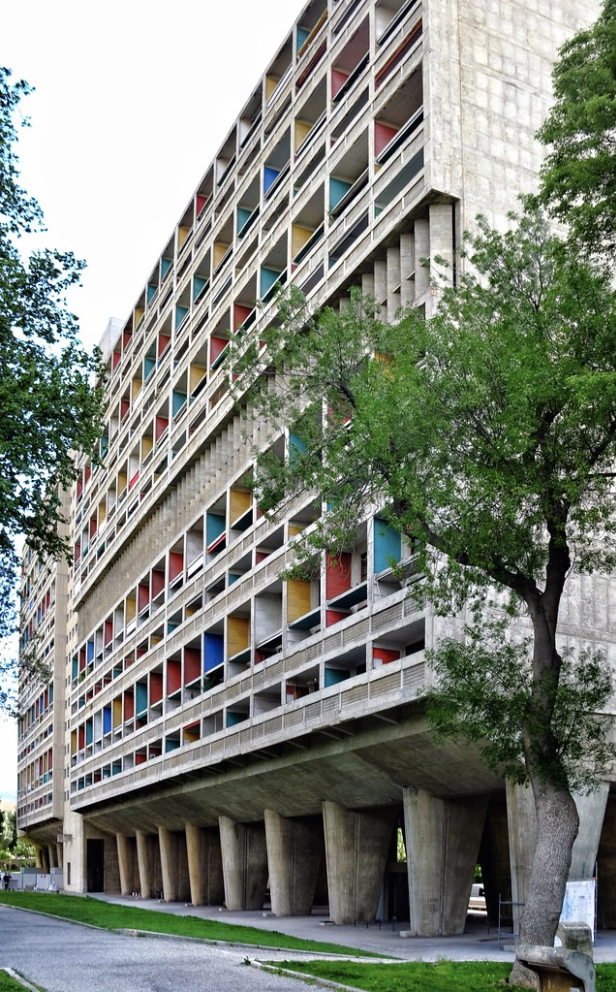 Building: Unité d’Habitation Architect: Le Corbusier Established: 1952 Location: Marseille, France [1]
Building: Unité d’Habitation Architect: Le Corbusier Established: 1952 Location: Marseille, France [1]
While Le Corbusier is thought of as the father of Brutalism, other 20th century masters, as well as contemporary architects, made there mark on Brutalsim such as Marcel Breuer, Lina Bo Bardi, Carlo Scarpa, Ernö Goldfinger, Frank Lloyd Wright, Louis Kahn, Oscar Niemeyer, Paul Rudolph, Peter Zumthor, Alvaro Siza, David Chipperfield, Diller and Scofidio, Herzog & de Meuron, Jean Nouvel, and Zaha Hadid [3]. The architectural aesthetic peaked in the mid-1970s [1], resulting in famous buildings such as Boston City Hall and the Giesel Library in San Diego.
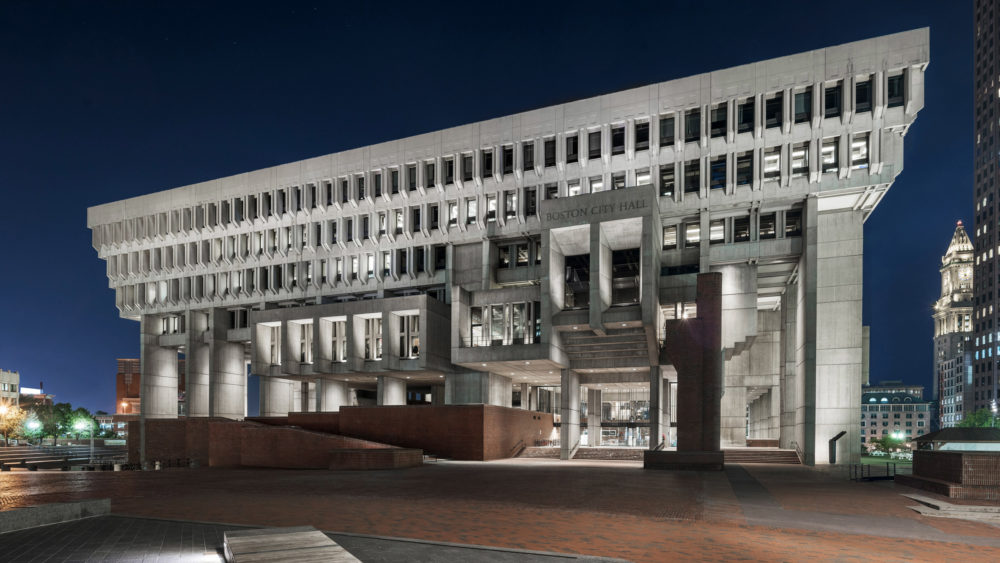 Building: Boston City Hall Architect: Michael McKinnell and Gerhard Kallmann Established: 1968 Location: Boston, Massachusetts, USA [4]
Building: Boston City Hall Architect: Michael McKinnell and Gerhard Kallmann Established: 1968 Location: Boston, Massachusetts, USA [4]
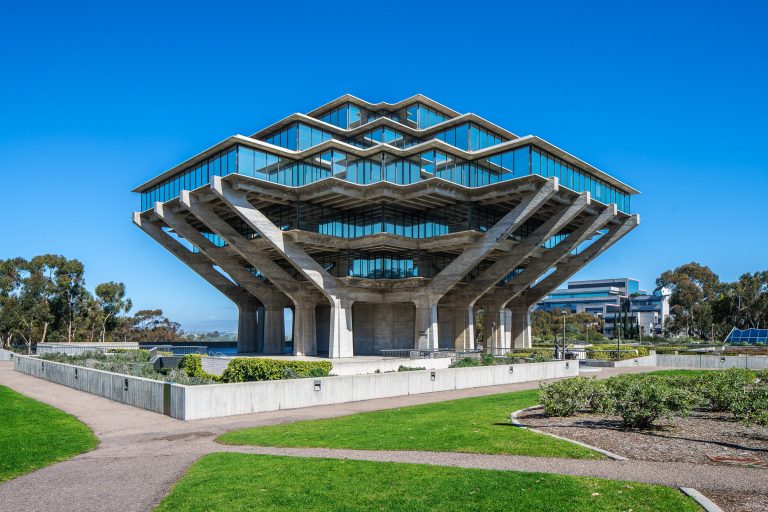 Building: Giesel Library Architect: William Pereira Established: 1970 Location: San Diego, California, USA [5]
Building: Giesel Library Architect: William Pereira Established: 1970 Location: San Diego, California, USA [5]
Despite some of the most iconic brutalist buildings being located in the US and UK, Brutalism particularly took hold in Eastern European Communist countries, where the style became a good way to represent socialist power, pride, and unity. Many of these awe-inspiring monuments are still standing today, such as the Tjentište War Memorial [6], the Mound of Glory [7], and the Monument of the Bulgarian-Soviet Friendship [8].
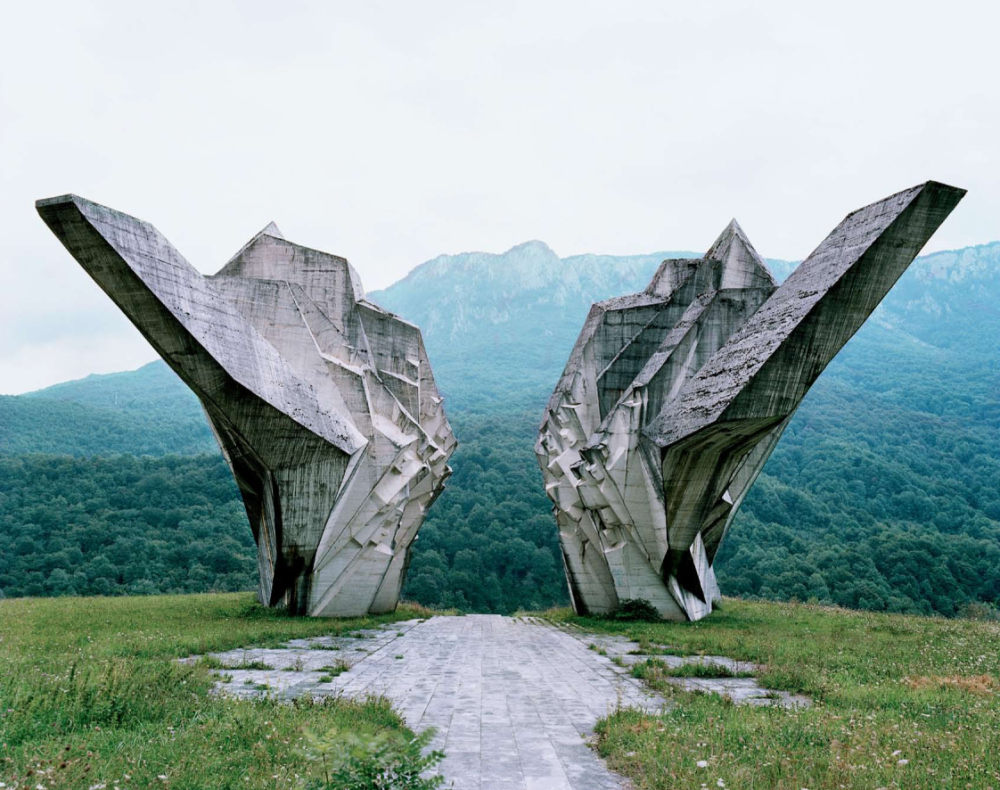 Monument: Tjentište War Memorial in the Valley of Heroes Sculptor: Miodrag Živković Architect: Ranko Radović Established: 1971 Location: Tjentište, Bosnia and Herzegovina [6]
Monument: Tjentište War Memorial in the Valley of Heroes Sculptor: Miodrag Živković Architect: Ranko Radović Established: 1971 Location: Tjentište, Bosnia and Herzegovina [6]
 Monument: Mound of Glory Sculptor: O. Stakhovich Architect: A. Bembel Established: 1969 Location: Minsk, Belarus [7]
Monument: Mound of Glory Sculptor: O. Stakhovich Architect: A. Bembel Established: 1969 Location: Minsk, Belarus [7]
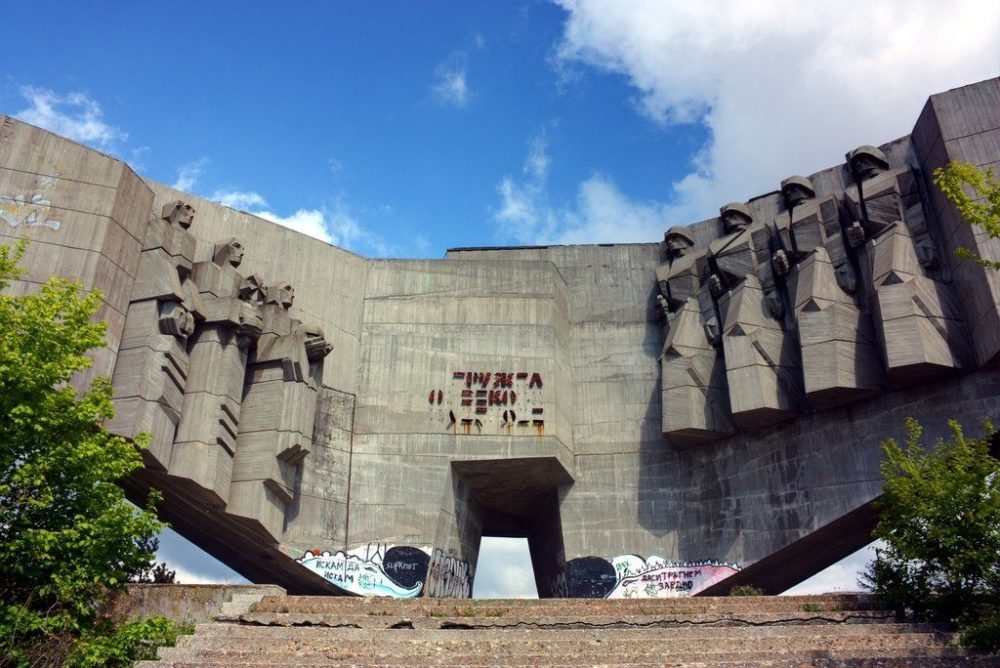 Monument: Monument of the Bulgarian-Soviet Friendship Sculptor: Alyosha Kafedzhiyski and Evgeni Barumov Architect: Kamen Goranov Established: 1978 Location: Varna, Bulgaria [8]
Monument: Monument of the Bulgarian-Soviet Friendship Sculptor: Alyosha Kafedzhiyski and Evgeni Barumov Architect: Kamen Goranov Established: 1978 Location: Varna, Bulgaria [8]
Due to pop culture using Brutalism to symbolize future dystopia (A Clockwork Orange), its socialist connotations, and the generally imposing nature of the buildings, Brutalism quickly fell out of favor in the 1980s [9]. Boston City Hall was even named the ugliest building in the world in 2008 [10]. However, in recent years it has regained popularity, due to its unique aesthetic and architectural ethic. The honesty of the materials and forms used in Brutalism makes the style undeniably appealing. Many brutalist buildings are being renovated, while other monuments are being turned into UNESCO World Heritage Sites. As for new construction, Kanye West’s Yeezy HQ, designed by Willo Perron, adopts the brutalist aesthetic [3].
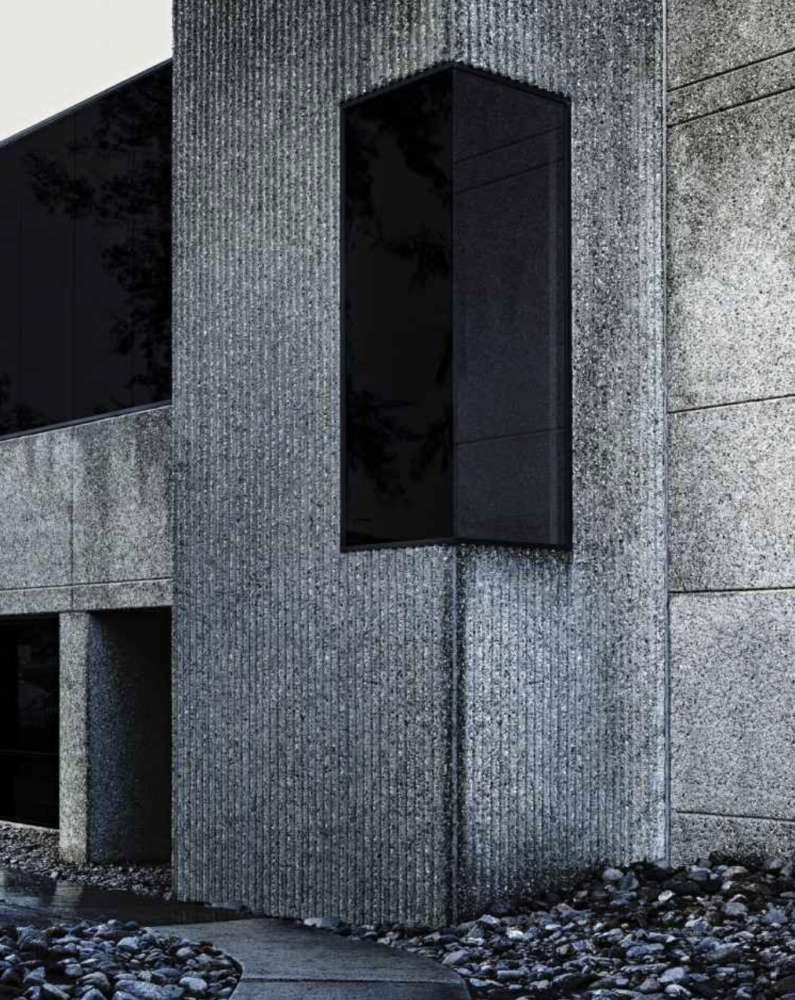 Building: Yeezy HQ Designer: Willo Perron Established: 2017 Location: Calabasas, California, USA [11]
Building: Yeezy HQ Designer: Willo Perron Established: 2017 Location: Calabasas, California, USA [11]
Lastly, for all my fellow skiers out there, here’s a beautiful segment from ski film, Ruin and Rose, filmed at the Buzludzha Monument, which is the Memorial House of the Bulgarian Communist Party [12, 13].
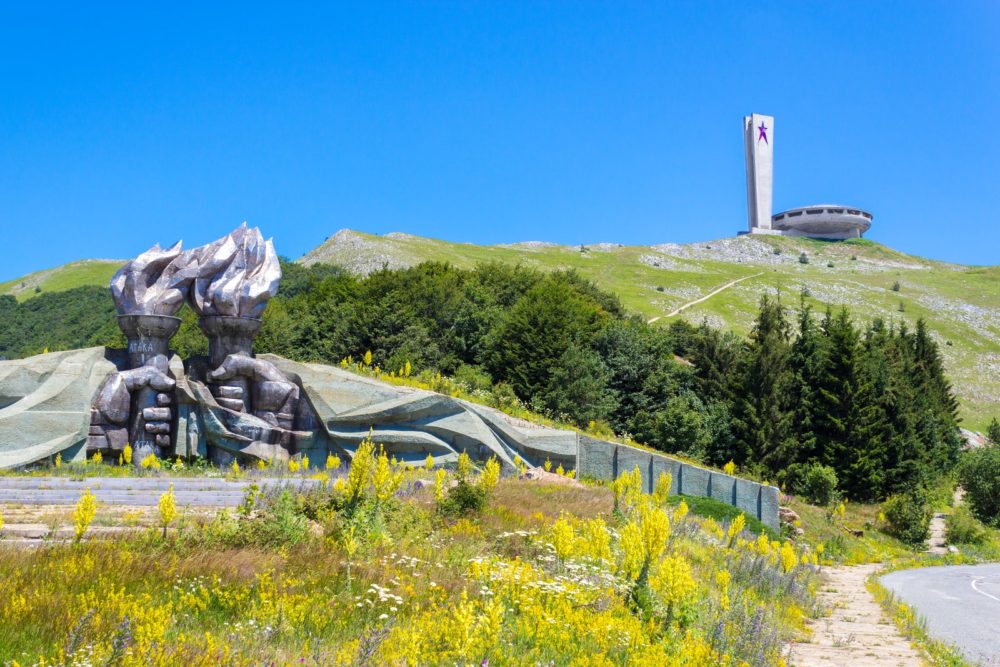 Monument: Buzludzha Monument Architect: Georgi Stoilov Established: 1981 Location: Buzludzha, Bulgaria [13]
Monument: Buzludzha Monument Architect: Georgi Stoilov Established: 1981 Location: Buzludzha, Bulgaria [13]
References
[1] J. Stewart, “Brutalism: What Is It and Why Is It Making a Comeback?”, My Modern Met, Dec. 4, 2018. [Online]. Available: https://mymodernmet.com/brutalist-architecture/. [Accessed Jan. 15, 2020].
[2] “Brutalism”, Tate, n.d. [Online]. Available: https://www.tate.org.uk/art/art-terms/b/brutalism. [Accessed Jan. 15, 2020].
[3] “Brutalist architecture – a retrospective”, Architecture and Design, Sept. 5, 2019. [Online]. Available: https://www.architectureanddesign.com.au/features/list/a-look-at-brutalist-architecture. [Accessed Jan. 21, 2020].
[4] B. Cogley, “Boston City Hall renovation preserves “straightforward honesty” of brutalist building”, Dezeen, Oct. 22, 2019. [Online]. Available: https://www.dezeen.com/2019/10/22/boston-city-hall-renovation-utile/. [Accessed Jan. 20, 2020].
[5] M. Muraz, “Brutalist Architecture at the Geisel Library in San Diego”, Photography Unfolded, Jun. 18, 2018. [Online]. Available: https://photographyunfolded.com/2018/06/18/brutalist-architecture-at-the-geisel-library-in-san-diego/.[Accessed Jan. 20, 2020].
[6] “Tjentiste War Memorial”, Atlas Obscura, 2020. [Online]. Available: https://www.atlasobscura.com/places/tjeniste-war-memorial. [Accessed Jan. 21, 2020].
[7] “Mound of Glory”, Atlas Obscura, 2020. [Online]. Available:https://www.atlasobscura.com/places/mound-of-glory. [Accessed Jan. 21, 2020].
[8] “Monument of the Bulgarian-Soviet Friendship“, Atlas Obscura, 2020. [Online]. Available: https://www.atlasobscura.com/places/monument-of-the-bulgarian-soviet-friendship. [Accessed Jan. 21, 2020].
[9] N. Saval, “Brutalism Is Back”, The New York Times, Oct. 6, 2016. [Online]. Available: https://www.nytimes.com/2016/10/06/t-magazine/design/brutalist-architecture-revival.html. [Accessed Jan. 20, 2020].
[10] B. Goldsmith, “Travel Picks: 10 top ugly buildings and monument”, Reuters, Nov. 14, 2008. [Online]. Available: https://www.reuters.com/article/us-travel-picks-ugly/travel-picks-10-top-ugly-buildings-and-monument-idUSTRE4AD2V720081114. [Accessed Jan. 21, 2020].
[11] A. Pacheco, “Look inside Kanye West’s Yeezy Studio, his headquarters in a California office park”, The Architect’s Newspaper, May 14, 2018. [Online]. Available: https://archpaper.com/2018/05/look-inside-kanye-wests-yeezy-studio-calabasas/#gallery-0-slide-2. [Accessed Jan. 21, 2020].
[12] “Ruin and Rose”, Matchstick Productions, Oct. 25, 2016. Available: https://www.youtube.com/watch?v=AanSRu6m11A. [Accessed Jan. 15, 2020].
[13] “Buzludzha Monument”, Buzludzha-Monument.com, 2019. [Online]. Available: http://www.buzludzha-monument.com/#welcome. [Accessed Jan. 18, 2020].

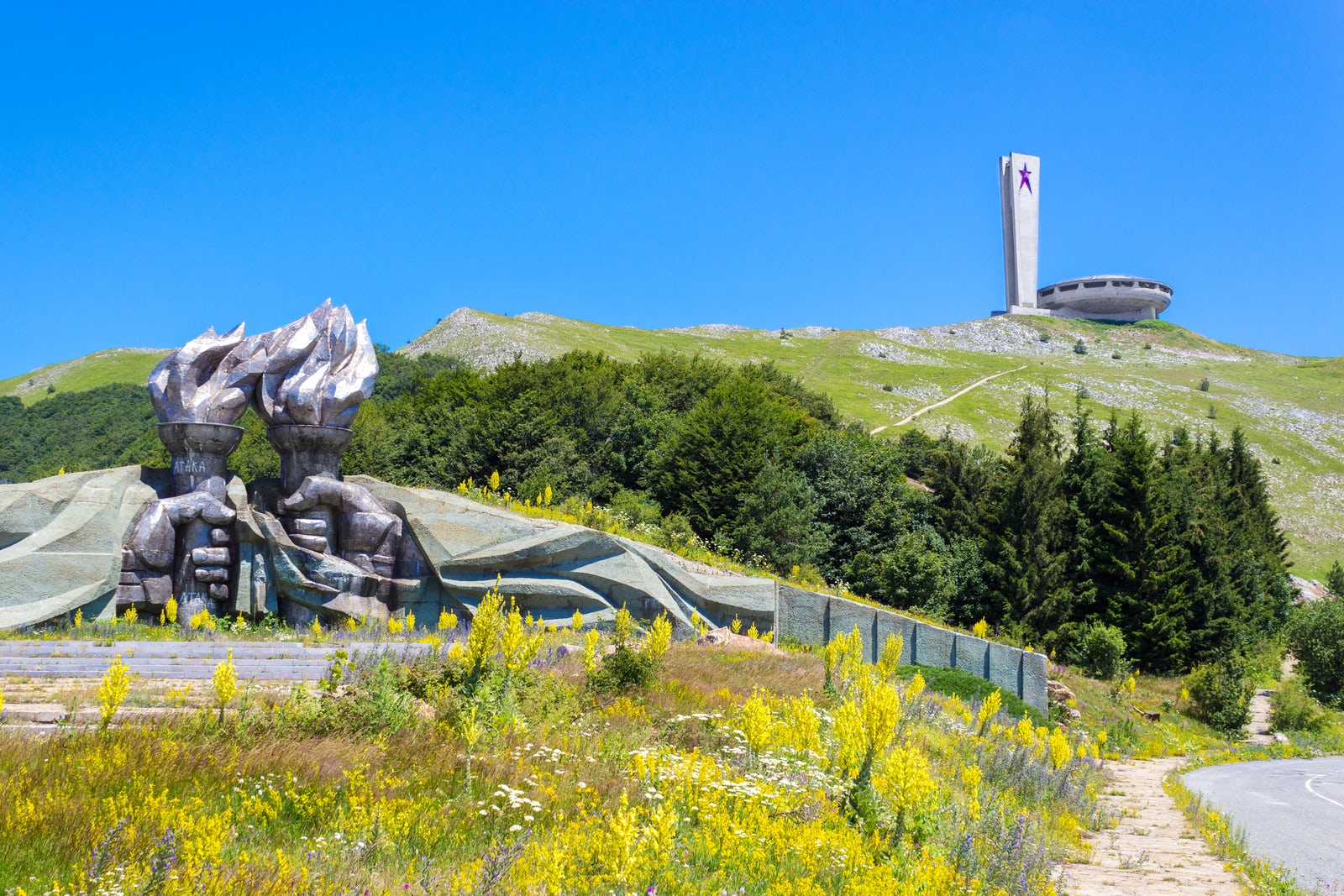
4 Comments. Leave new
Hello Fiona, great aesthetic choice! Your exploration caught my eye because the architecture style I’ve been looking at recently for my own aesthetic exploration of retrofuturism seems to be the polar opposite of brutalism, visually speaking. I looked a bit into the origins of Brutalism, and it made sense that the movement would gain traction in war-torn communities in the UK and the satellite countries of the USSR due to the inexpensive construction. I also find it interesting that certain types of buildings seem predisposed to featuring Brutalist architectural concepts, namely governmental buildings and other institutional buildings like those at a university. During undergrad at UW-Madison, I encountered a stellar example of this architectural movement: The George L Mosse Humanities Building, which was constantly lambasted for being impossible to navigate once inside. Though Brutalism is firmly established as an architectural movement, do you think there is something other than buildings or monuments that could be considered “Brutalist”?
-Justin Engbrecht
Hi Justin! As you said, Brutalism is an established architectural movement, however, I think there is a lot of fine art, crafts, and design that share the same overarching characteristics. These characteristics being simple materials and geometric forms. As far as fine art goes, Brutalism overlapped significantly with the Minimalist movement of the 1960s. Minimalist painter, Frank Stella, famously said about his work, ‘what you see is what you see’, and I feel like this quote applies to Brutalism as a whole. Both with Minimalism and Brutalism there is no attempt to represent anything natural (landscapes, people, things, etc.), it’s just about making the viewer respond to what they are looking at. Today, the minimalist aesthetic has been used to describe everything from architecture, to product design, to clothing. I briefly mentioned Kanye West’s Yeezy HQ building and how it applies a brutalist aesthetic. I think that this is the perfect architectural style for the minimalist clothing aesthetic of the Yeezy brand. So to sum up, I think Brutalism is just the term used to describe the architecture of the greater minimalist aesthetic that was present in the 60s and 70s and is still present today.
Hey Fiona, sweet post!! It caught my interest the name “brutalism.” My first thought before opening your post was that brutalism was going to be some sort of medieval “rough” look for a person, but when I opened your post and saw those awe inspiring architectural buildings/monuments I was very surprised. After reading that the term “brutalism” came from the French word raw concrete, beton brut, it made sense. I also love the video you posted because it takes brutalist architecture and puts a new light to it with skiing! I assume you like skiing? My question would be, what led you to choose brutalism as your aesthetic?
Hi Benjamin! Haha, yes I do love skiing. It was actually that ski movie that made me aware of these brutalist, communist monuments. After doing more research, I learned that this style applied to many more buildings around the world. To answer your question though, I chose this aesthetic because I think these buildings create deep, visceral feelings to the viewer. For example, when I visited Boston, I remember feeling so small and intimidated by City Hall. I also chose this aesthetic because of its current comeback in the form of the minimalist aesthetic, which applies to so much more than just buildings.